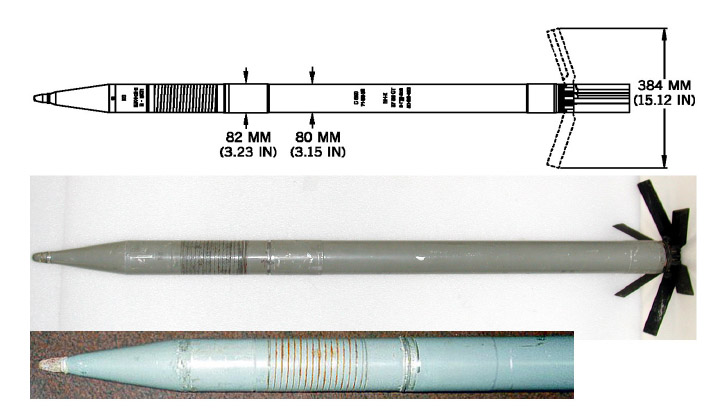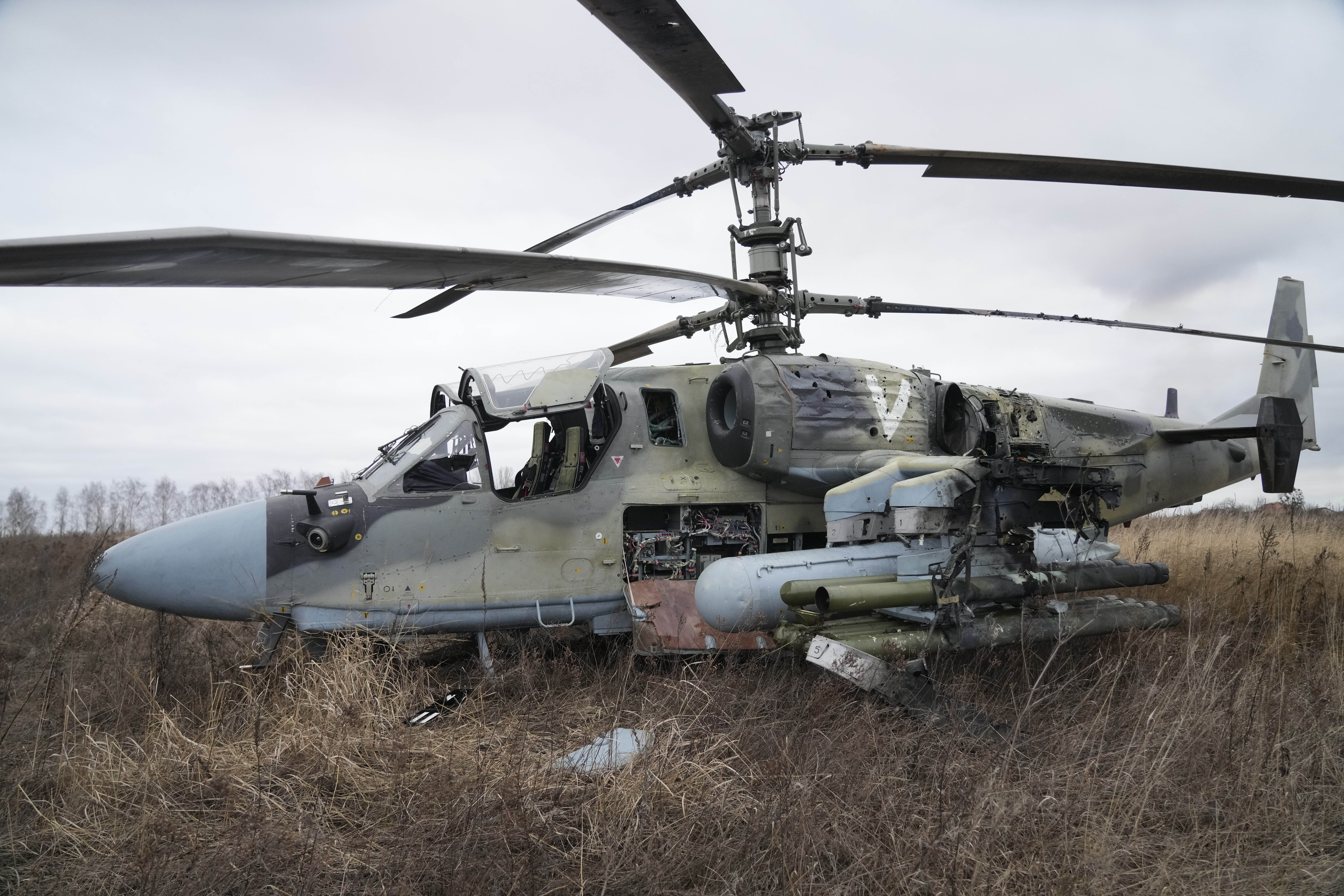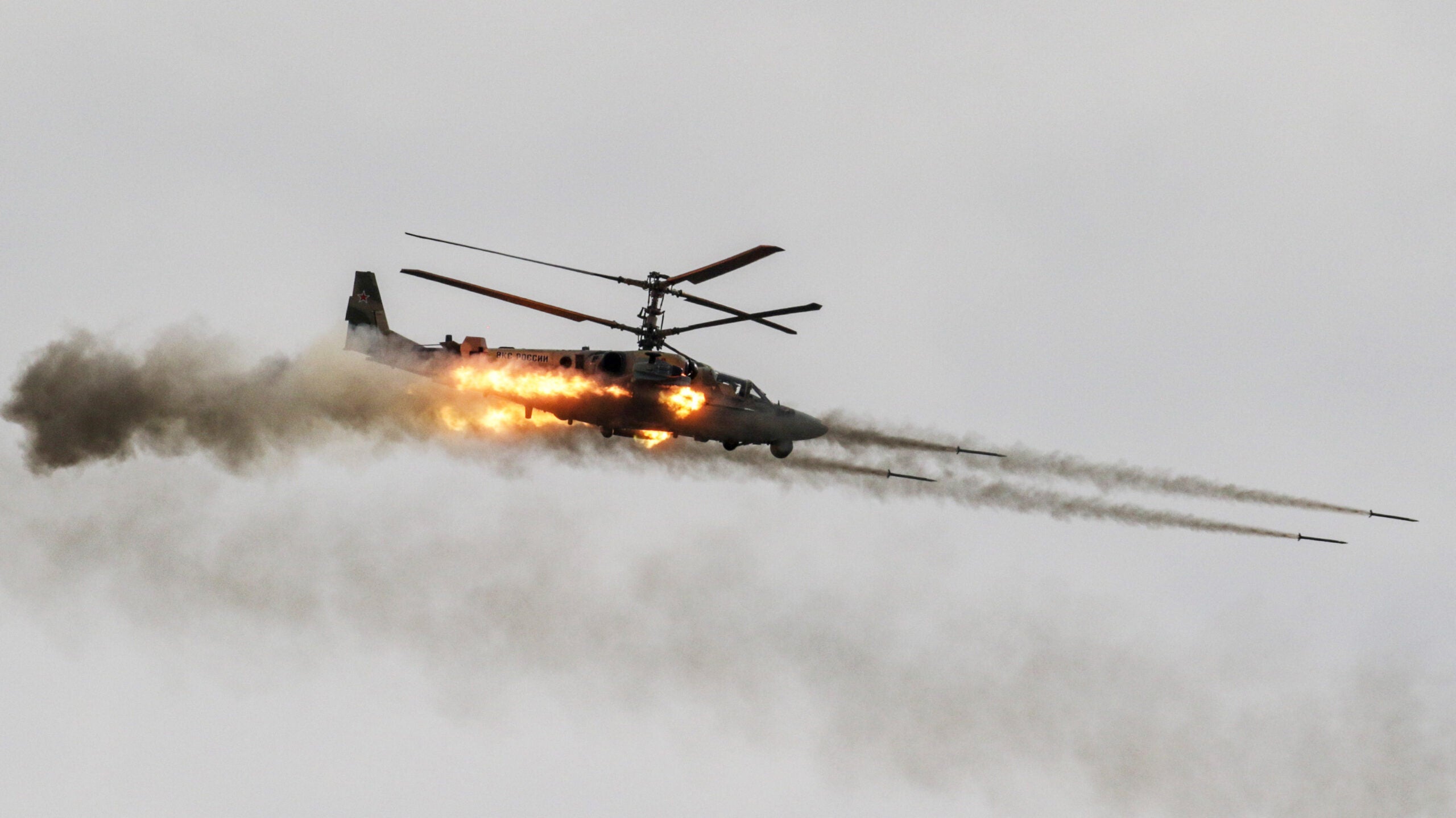As Russia’s invasion of Ukraine grinds on, with resistance still strong, and overall progress limited, Russian airpower, not surprisingly, remains involved. So far, the tactics and application of the Russian Aerospace Forces, or VKS, have left many observers baffled. Compounding this is recent footage that appears to show attack helicopters from the service launching unguided rockets in an apparent effort to provide ‘airborne multiple rocket launchers‘ — the efficiency of which is questionable, at best.
A roughly one-minute video that began to be shared on social media today shows two VKS helicopter gunships — a Ka-52 Hokum, followed shortly after by a Mi-28N Havoc — launching rockets, likely unguided 80mm caliber examples over an unidentified location in Ukraine, possibly near Popasna. Both of those helicopter types are featured in our rundown of Russian airpower in the region, which you can find here.

While most VKS attack helicopters involved in the conflict have been noted carrying unguided rockets, as well as anti-tank guided missiles (ATGMs), what makes this footage extraordinary is the way the rockets are fired. Starting at low level, each helicopter pulls up into a fairly steep climb, launching rockets as they gain height. At the same time, they eject infrared decoy flares, typical practice to counter the man-portable air defense systems (MANPADS) that are prevalent in Ukrainian hands. The helicopters then break to the left, dive down to lower altitude, and fly away.


The thinking behind this rocket-launching tactic is unclear, but has already been the subject of pretty intense online debate. Firstly, it is almost certain these are unguided rockets. While Russia has developed laser-guided rockets, roughly equivalent to the U.S. Advanced Precision Kill Weapon System (APKWS), they are not known to be in use, and the value of laser guidance when such large salvos are fired is already questionable.
What we are likely seeing, then, is unguided rockets being fired in an upward trajectory, which would extend their range by a considerable margin, but at the same time would reduce their accuracy substantially. Unguided rockets like the 80mm S-8 are direct-fire weapons, which means they need to follow a straight line to the target in order to hit it with accuracy. Launching them on a parabolic trajectory will ensure they fly further, but they will also disperse much more widely.

One explanation is that these VKS attack helicopters are simply using their unguided rockets in a fairly indiscriminate way, much like how some multiple rocket launcher systems can be used, to rain down explosives on a wide area. Targets could be soft-skimmed military vehicles or personnel, but it might also be the case that the rockets are being used more for psychological value against a non-military target. On multiple occasions so far in the war, Russia has been responsible for using weapons against civilian targets, by accident or design.
S-8 rockets (and other weapons) employed in a more conventional manner during the campaign in Ukraine:

The S-8 is also available with optional warheads that would be better suited to an area-attack role. While the basic versions of the rocket are fitted with fragmentation or combined fragmentation/shaped-charge warheads, there are also models with thermobaric or flechette warheads. These are intended for fighting manpower, with the flechette type containing 2,000 arrow-shaped striking elements.

The decision to launch rockets further from whatever the objective was also likely points to a particularly well-defended target being under attack. The VKS has lost a steady stream of aircraft in its offensive operations so far, with helicopters proving especially vulnerable. So far, there is firm evidence that Russian forces have lost a number of Ka-52s to various causes during the fighting, as well as credible evidence of a least one Mi-28N loss. The actual number of airframes lost is likely much higher.

The Ukrainian Ministry of Defense has claimed to have destroyed much larger numbers of Russian aircraft of all types, among other things. Those tallies include aircraft shot down and destroyed on the ground in attacks such as the recent one on the Russian-occupied Kherson Air Base in the south of Ukraine, which you can read about here.

This ballistic rocket-launching tactic could very well be an attempt to mitigate the threat posed by Ukrainian air defenses. If that’s the case, the presence of Ukrainian MANPADS or other low-level missiles, in this instance, seems to have had the effect of reducing the accuracy of VKS airstrikes, by forcing the attacking helicopters to greatly reduce their exposure to these missiles. Add more substantial surface-to-air weapons (medium-range and beyond), and this issue would be further compounded.
If the Ukrainian forces in the area were armed with FIM-92 Stinger MANPADS, for example, then these would be able to engage helicopters flying below around 12,000 feet out to a distance of 3 miles or so. In comparison, the S-8, depending on the variant, has a range of between 1.2 and 2.8 miles.
A Russian Mi-24/35 series helicopter is shot down by a Ukrainian missile, likely from a MANPADS:

A longer-range version of the rocket, the S-8OFP has been developed and its reported range of 3.7 miles would put it outside the Stinger’s engagement envelope. However, the status of this rocket is unclear and there are other, longer-range MANPADS and other short-range air defense systems that would still threaten attack helicopters at this distance.
On the other hand, both the Ka-52 and Mi-28N are normally provided with ATGMs which are able to hit targets accurately from longer ranges, over 6 miles in the case of the Ka-52’s Vikhr-1 missile. However, depending on the ATGM, the helicopter will likely have to unmask itself by flying at a certain altitude to engage the target. Perhaps stocks of these more expensive weapons are also running low at this point, or conceivably the target was considered too well defended to get closer to while exposing the airframe for a period of time.
A Russian Ka-52 launches Vikhr-1 ATGMs during exercises:

The fact that both the Ka-52 and Mi-28N have relatively sophisticated fire-control systems does mean there is a possibility that the crew can use their weapons computer to provide the angle and release rate required for a particular target location. Even so, since the rockets remain unguided, and would be subject to drift and other inaccuracy inducing factors over their longer flight path, then the accuracy will still be greatly degraded compared to a direct rocket attack.
There is one other possibility that could also explain this tactic. Among the wide range of warheads available for the S-8 rocket is the S-8P, a jamming rocket that provides protection for the launch aircraft, or other nearby helicopters, by dispensing metalized fiberglass chaff. Potentially, the helicopters may be attempting to disrupt air defense radar or other radio-frequency emitters in the area, for their own safety, or that of other friendly aircraft. Still, this isn’t likely the case here.
Others have suggested that the helicopter crews in question were simply disposing of their rocket armament rather than returning to base with it, although it’s hard to see how this apparently indiscriminate firing would be the most desirable approach. Furthermore, another video shows this kind of ballistic rocket-firing being practiced in a training scenario, suggesting it’s a recognized tactic. There are also reports that Russian helicopters have operated this way during the Syrian campaign.
Indeed, there is also this example from a Cold War-era East German training manual explaining a similar tactic, albeit this time making use of the Mi-24 Hind helicopter. Interestingly, this manual also notes that a disadvantage of the tactic is that the rocket warheads are less likely to detonate on impact, due to a slower impact speed.
Whatever exactly was the nature of the target being engaged by this pair of Russian attack helicopters, the fact that these advanced aircraft, with their extensive self-protection systems, are being forced to launch their weapons in this way does speak to the continued efficiency of Ukrainian air defenses. While ‘airborne multiple rocket launchers’ would clearly constitute a terrifying weapon for the civilian populace, their effect against military targets is likely to be limited, with the exception of widely spread out and unprotected vehicles, troop formations, arrayed artillery, or even certain air defense systems sitting in large open areas.
Once again, it seems, this is an example of the VKS employing questionable tactics as it labors to make meaningful inroads against an opposition that is not only highly motivated but still possesses significant stocks of anti-aircraft weapons. With even more such weapons on the way, the operating environment for these and other Russian helicopters will likely only become more difficult.
Update, March 18: Another example of Russian helicopters launching rockets ballistically over Ukraine has come to light. This video shows Ka-52s purportedly attacking Ukrainian positions near Donetsk and was reportedly taken this morning.
We have also been alerted to previous accounts of Russian helicopters carrying out similar attacks during their first campaign in Chechnya, fought between 1994 and 1996. According to a report from the U.S. Army Foreign Military Studies Office, entitled the Air Operations in Low-Intensity Conflict: The Case of Chechnya:
“Russian pilots … had no reliable data on the disposition of Chechen weapons, forcing crews to operate from maximum possible ranges when employing their armament. Some helicopter crews employed a new tactic, that of launching their S-24 unguided rockets with a pitch-up maneuver, increasing the range of the weapon by six to seven kilometers. This allowed pilots to fire without entering the kill zone of the air defense weapons of Dudayev’s forces. Although the tactic reduced accuracy, it probably was a key factor in increasing the number of civilian casualties.”
Contact the author: thomas@thedrive.com
